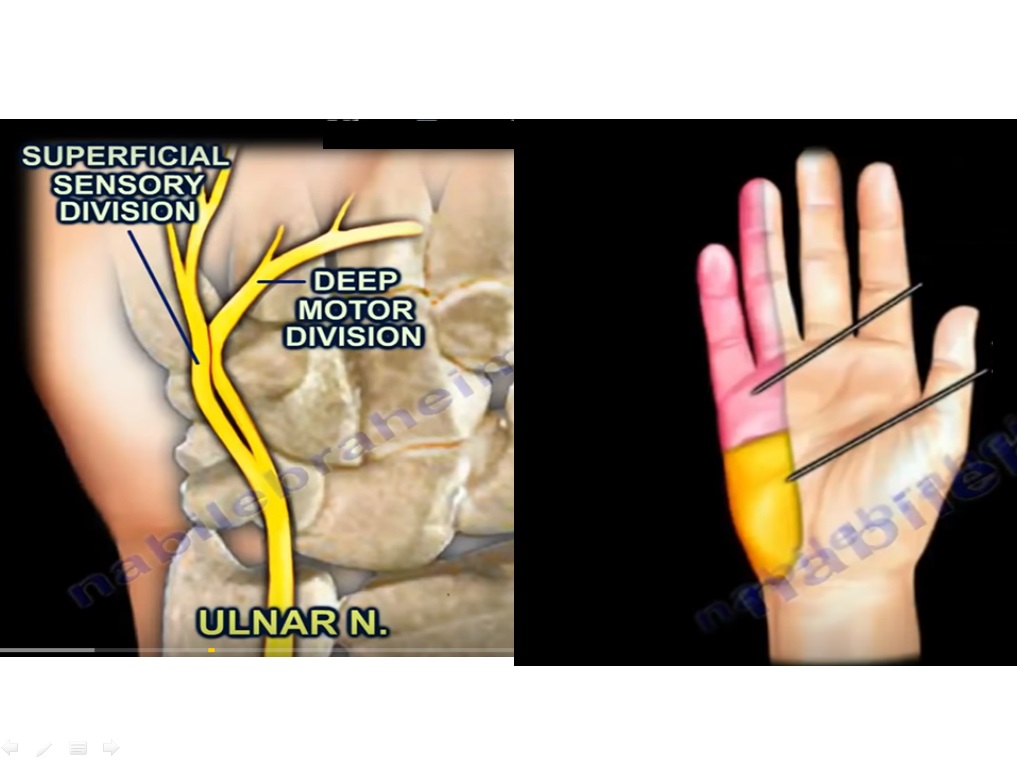Guyon Canal Syndrome is a condition that affects the ulnar nerve as it passes through the Guyon canal in the wrist. This often overlooked syndrome can lead to various symptoms and complications if not addressed promptly. In this comprehensive article, we will delve into the intricacies of Guyon Canal Syndrome, exploring its causes, symptoms, diagnosis, and available treatment options.
Unraveling the Guyon Canal
What is the Guyon Canal?
The Guyon canal, also known as the ulnar canal, is a narrow passageway in the wrist that the ulnar nerve traverses. It is crucial for the functionality of the hand and fingers, making it vital to understand how Guyon Canal Syndrome can impact our daily lives.
Recognizing the Signs and Symptoms
Numbness and Tingling
One of the primary indicators of Guyon Canal Syndrome is numbness and tingling in the ring and little fingers. These sensations can occur gradually or suddenly and may be accompanied by weakness in the affected hand.
Hand Weakness
As the condition progresses, individuals may experience weakness in the hand, making simple tasks like gripping objects or buttoning a shirt challenging.
Causes and Risk Factors
Compression of the Ulnar Nerve
Guyon Canal Syndrome is primarily caused by the compression of the ulnar nerve within the Guyon canal. This compression can result from various factors, including trauma, repetitive movements, or underlying medical conditions.
Occupations and Activities
Certain occupations and activities that involve repetitive wrist movements or pressure on the palm can increase the risk of developing Guyon Canal Syndrome. Understanding these risk factors is essential for preventive measures.
Diagnosing Guyon Canal Syndrome
Clinical Examination
A thorough clinical examination, including a detailed medical history, is crucial for diagnosing GuyonCanal Syndrome. Physicians may perform specific tests to assess sensation, strength, and reflexes in the affected hand.
Imaging Studies
In some cases, imaging studies such as X-rays or magnetic resonance imaging (MRI) may be recommended to visualize the structures in the wrist and confirm the diagnosis.
Treatment Options
Conservative Approaches
Mild cases of GuyonCanal Syndrome may be managed with conservative approaches, including rest, wrist splints, and physiotherapy. These measures aim to alleviate symptoms and prevent further nerve compression.
Surgical Intervention
In more severe cases, surgical intervention may be necessary to release the pressure on the ulnar nerve. Surgery aims to create more space within the Guyon canal, relieving the compression and restoring normal nerve function.
Living with Guyon Canal Syndrome
Lifestyle Modifications
Individuals with GuyonCanal Syndrome can make lifestyle modifications to manage symptoms better. Ergonomic adjustments in daily activities and avoiding repetitive wrist movements are crucial for long-term well-being.
Seeking Professional Advice
Consulting with healthcare professionals for personalized advice and treatment plans is essential for effectively managing GuyonCanal Syndrome. A collaborative approach ensures the best possible outcome for individuals facing this condition.
Conclusion
Guyon Canal Syndrome is a condition that demands attention and understanding. From recognizing the early symptoms to exploring treatment options, being informed is the first step towards a healthier life. By addressing GuyonCanal Syndrome promptly, individuals can regain control over their hand function and overall well-being.
FAQs
Is GuyonCanal Syndrome a common condition?
GuyonCanal Syndrome is considered relatively uncommon, but awareness is crucial for early detection and management.
Can GuyonCanal Syndrome affect both hands?
Yes, GuyonCanal Syndrome can affect either one or both hands, depending on the underlying causes and individual circumstances.
Are there preventive measures for GuyonCanal Syndrome?
Engaging in ergonomic practices, taking breaks during repetitive activities, and maintaining wrist health can help prevent GuyonCanal Syndrome.
What is the recovery time after surgical intervention?
The recovery time after surgery for GuyonCanal Syndrome varies, with most individuals experiencing significant improvement within a few weeks to months.
Can GuyonCanal Syndrome recur after treatment?
While recurrence is possible, following post-treatment guidelines and adopting preventive measures can minimize the risk.







